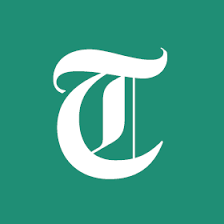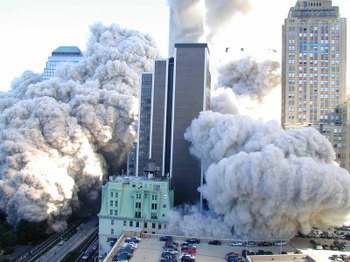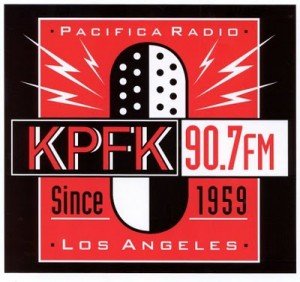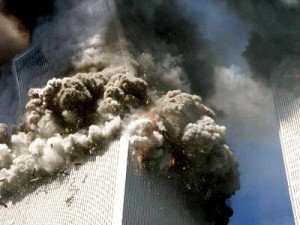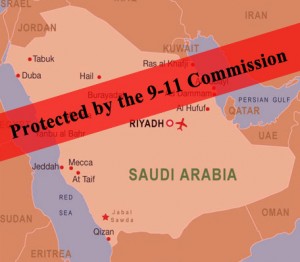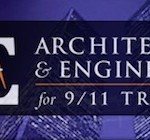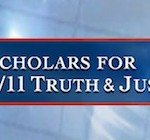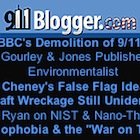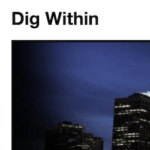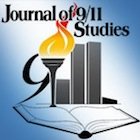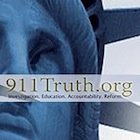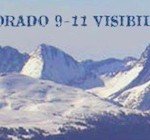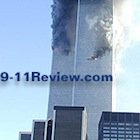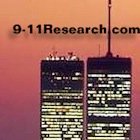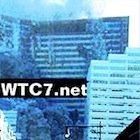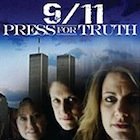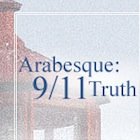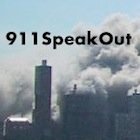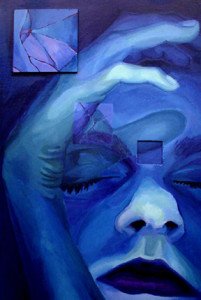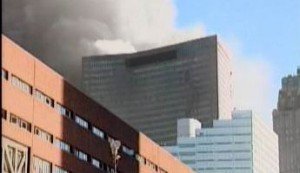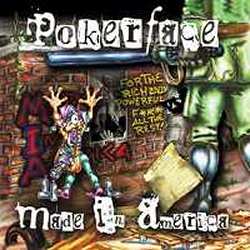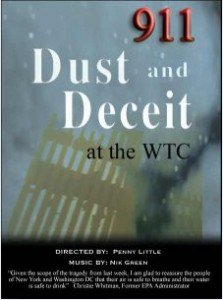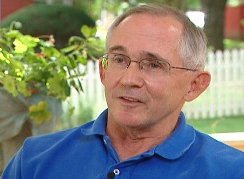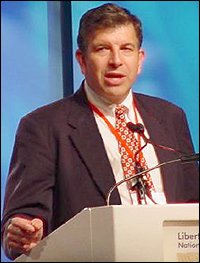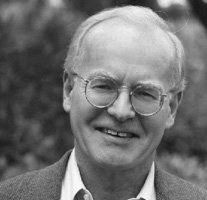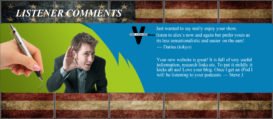Dawdler in chief: The suspicious behavior of George W. Bush during the 9/11 attacks
By Matthew Everett
Online Journal Contributing Writer
September 11, 2007
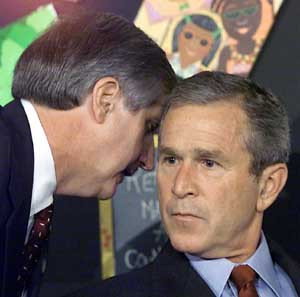 “Sandy Kress, Bush’s unpaid education advisor, was puzzled. Bush was always on time. But on the morning of Tuesday, September 11, he seemed to want to linger, talking about politics and mutual friends in Texas.” [1] So wrote Ronald Kessler in his account of the Bush presidency, A Matter of Character. The time in question was around 8:30 a.m., a quarter of an hour after American Airlines Flight 11 had broken communication with air traffic controllers. The 9/11 attacks were now underway. While many odd things took place that morning, Kress’s observation highlights another curious detail: On September 11, 2001, President Bush was running late.
“Sandy Kress, Bush’s unpaid education advisor, was puzzled. Bush was always on time. But on the morning of Tuesday, September 11, he seemed to want to linger, talking about politics and mutual friends in Texas.” [1] So wrote Ronald Kessler in his account of the Bush presidency, A Matter of Character. The time in question was around 8:30 a.m., a quarter of an hour after American Airlines Flight 11 had broken communication with air traffic controllers. The 9/11 attacks were now underway. While many odd things took place that morning, Kress’s observation highlights another curious detail: On September 11, 2001, President Bush was running late.
This would be of little significance were it not for the fact that this behavior was completely out of character for the president. Bush is not known for dawdling. For example, earlier in 2001, CNN’s congressional correspondent Jonathan Karl talked of “Bush’s reputation for being punctual.” [2] According to David Frum, a former speechwriter for the president: “Bush is famous for his punctuality.” [3] Sandy Kress has called him “a very punctual person.” [4] According to the Washington Post: “Bush’s staff, his friends, his family, his wife” all describe him as “an intensely disciplined and focused individual,” who “puts a premium on punctuality.” [5] The London Times stated it more bluntly: “There has probably never been a president, there may not have been a human being, who observes punctuality with the sort of fanaticism that President George W. Bush brings to every aspect of his life.” [6] That was not, however, the case the morning of September 11.
Early morning
As he began that day, there was little that appears unusual in the president’s behavior. He’d arrived at the Colony Beach and Tennis Resort on Longboat Key, Florida, at 6:30 p.m. the previous evening, being in Florida as part of an effort to place a national spotlight on education. Bush went to bed early, as was his custom. [7] He’d gotten up just before 6 a.m. the morning of September 11. At 6:30, he went for his daily jog, going four-and-a-half miles around the Longboat Key Golf Club, accompanied by several Secret Service agents, and joined part of the way along by Bloomberg News White House correspondent Richard Keil. After returning to his hotel, the president ate breakfast, showered, and got dressed. Then, for the next hour, he met in his penthouse suite with a series of advisors, including — at just after 8 a.m. — receiving his daily CIA briefing. Reportedly, “The heightened threat of terrorism was mentioned this morning,” during the briefing, “as it had been nearly every morning since George W. Bush took office.” With his CIA briefer the president discussed the latest developments in the Middle East, particularly the Palestinian situation. [8] So far, so good.
Bush only appears to have begun acting out of character after 8:15, which happens to coincide with the time the attacks were beginning, when Flight 11 broke contact with air traffic control. [9] At that time, Bush met with Sandy Kress to go over the details of his planned 9 o’clock visit to the Emma E. Booker Elementary School in nearby Sarasota, where he was set to take part in a reading program demonstration and then address parents and teachers. Also in the meeting were Bush’s senior advisor Karl Rove, White House chief of staff Andrew Card, and Secretary of Education Rod Paige. Bush was scheduled to leave the resort at 8:30 a.m. for the drive to the school. But, Kress has recalled, he “was just sitting back and wanting to talk for a bit.” According to Kress: “I’ve never known him to be late. But I remember we finished the briefing on that fateful day, and we continued to talk for another ten minutes about people and politics in Texas. The time to leave came and passed.” Kress added: “That struck me as unusual.” [10] It appears that Bush was dawdling.
After finally leaving his penthouse suite, the president took the elevator down. Despite the fact that he was now running late, he stopped to have his photo taken with a hotel maintenance worker as he stepped out of the elevator. According to journalist and author Bill Sammon, Bush only then got into his limousine to head for Sarasota after “much shaking of hands and posing for pictures and saying pleasant things to local VIPs who had been invited to the Colony to see him off.” For the second time, it appears that George W. Bush was dawdling. Sammon, who was traveling with the president that morning, reported that Bush set off for the school at 8:39 a.m. [11] The president “famous for his punctuality” was running nine minutes late.
Driving to school
As the president’s motorcade headed toward Sarasota, Flight 11 crashed into the North Tower of the World Trade Center. Yet, supposedly, no one informed Bush of this until he arrived at the school, nearly 10 minutes later. Robert Plunket, a journalist with Sarasota Magazine who was waiting at the school that morning, later commented: “It mystifies me why they didn’t call the president — he’s totally surrounded by state of the art communications equipment and nobody tells him.” [12] Journalist and author James Bamford has said: “Despite having a secure STU-III phone next to him in the presidential limousine and an entire national security staff at the White House, it appears that the president of the United States knew less than tens of millions of other people in every part of the country who were watching the attack as it unfolded.” [13]
In spite of the delay in setting out, the president’s limousine arrived at the Emma E. Booker Elementary School at 8:55 a.m., in time for the 9 o’clock appointment. As Bush later remarked: “We’re on time — I like to stay on time; I like to be crisp.” [14] As soon as the motorcade stopped, Captain Deborah Loewer, the director of the White House Situation Room, briefed the president. Loewer had been in a vehicle behind the president’s and, unlike Bush, learned of the WTC crash during the journey, in a phone call from the Situation Room. “As soon as the motorcade stopped,” Loewer has said, “I ran up to the president’s limousine and I briefed the president and [chief of staff Andrew] Card of just that information. [Bush] asked me to keep him informed and I said, ‘Yes, sir, Mr. President.'” [15]
Waiting at the school was a small greeting committee, which, among others, included two Republican congressmen, Adam Putnam and Dan Miller. A White House staffer had informed them that the president had an important call to take from Condoleezza Rice. According to Putnam, they had been told: “When he arrives, and he’ll be here in a minute, he’s going to walk past you. He’s not being rude; he’s just got to take this phone call.” Yet in spite of apparently having already been informed of the crash at the WTC (by Loewer), Bush seemed far from eager to take the call. According to Putnam: “Well, he comes up and does not go past us. He stops and talks with us, having a good chat with the teacher of the year.” (This was Edwina Oliver, who was also part of the greeting committee.) Andrew Card said: “Mr. President. You have a phone call from National Security Advisor Rice you need to take.” According to Putnam, Bush “says OK. [But he] goes on talking with the teacher of the year. ‘I’ll be right there.’ Card comes back to him, grabs him by the arm and says, ‘Mr. President, you need to take this call right now.'” [16] For the third time that morning, George W. Bush was dawdling. Florida Lieutenant Governor Frank Brogan, another member of the greeting committee, described: “The president stepped away from our group and spoke quietly into the phone for a minute or two. When he returned, he said he had just learned that a plane had collided with one of the towers of the World Trade Center. While this was terrible news, there was no hint of the magnitude of what was happening, so nobody was unduly alarmed.” [17] Recalling the incident, Dan Miller said: “I don’t think he was aware at the time, maybe, of the seriousness.” [18]
Based on what he was initially told about the crash, the president has claimed he’d thought it was due to “pilot error.” He’d said to Andrew Card that the pilot “must have had a heart attack.” [19] Bush later recalled: “I was concerned about it, but there were no alarm bells.” [20]
The photo op begins
At around 9:02 a.m., just before the second aircraft hit the World Trade Center, President Bush entered the second-grade classroom of teacher Sandra Kay Daniels, where 16 young children were waiting to read to him. After being introduced to them, the president sat down and the children commenced their reading demonstration. [21] Then, at around 9:05-9:07, Andrew Card entered the room and walked across to where Bush was sitting. He leaned down and whispered in the president’s ear, reportedly telling him: “A second plane hit the second tower. America is under attack.” [22]
After delivering this extraordinary news, Card stood up and immediately backed away, taking up a position next to Frank Brogan at the side of the room. According to Bill Sammon, based on his exclusive interviews with the president:
Bush wondered whether he should excuse himself and retreat to the holding room, where he might be able to find out what the hell was going on. But what kind of message would that send — the president abruptly getting up and walking out on a bunch of inner-city second-graders at their moment in the national limelight? Bush might look rattled, or worse, panicked. The last thing the nation needed at this moment was a panicked president. Such an image might even play into the hands of the attackers. No, better to remain calm and sit tight for now. Bush sensed that his demeanor would be almost as important as his actions in these first crucial moments. [23]
So, rather than excusing himself from the classroom and assuming his critical responsibilities in helping to protect his country, “The president briefly turned somber before he resumed reading.” [24] As James Bamford described:
Having just been told that the country was under attack, the commander in chief appeared uninterested in further details. He never asked if there had been any additional threats, where the attacks were coming from, how to best protect the country from further attacks, or what was the current status of NORAD [the North American Aerospace Defense Command] or the Federal Emergency Management Agency. Nor did he call for an immediate return to Washington. Instead, in the middle of a modern-day Pearl Harbor, he simply turned back to the matter at hand: the day’s photo op. Precious minutes were ticking by, and many more lives were still at risk. [25]
Now that it was clear that America was under attack and needed its president immediately, it is far more difficult to dismiss George W. Bush’s continued dawdling as some kind of accident. As the Arlington Heights Daily Herald pointed out: “on that day, Bush’s presence made even the planned reading event a perceived target.” In fact, according to the Daily Herald: “Because the well-publicized event at the school assured Bush’s location that day was no secret, the dense White House security urged school officials to send students home.” [26] Apparently, they did not do this right away, as the president remained at the school for over half an hour after the second attack occurred.
If Bush himself was unwilling to excuse himself from the classroom, surely his Secret Service agents should have removed him from there. They were there, after all, for the purpose of protecting him. As the St. Petersburg Times reported: “Police and Secret Service agents were on the roof, on horseback and in every hallway” of the school for the president’s visit. [27] In fact, according to the Tampa Tribune, the reason the classroom of Sandra Kay Daniels had been selected for the visit was “not because [she and her students] fulfilled some complicated formula; her classroom merely was situated next to the school’s north door, making it easier to organize elaborate security.” [28] Yet, now there was an urgent need for elaborate security arrangements to be implemented, the Secret Service was as complacent as the president. “For some reason, Secret Service agents did not bustle [the president] away,” wrote Canada’s Globe and Mail. [29]
According to author Philip Melanson, who was an expert on the Secret Service, as soon as the second plane hit the World Trade Center, the Secret Service should have whisked Bush out of the school. Melanson said: “With an unfolding terrorist attack, the procedure should have been to get the president to the closest secure location as quickly as possible, which clearly is not a school. You’re safer in that presidential limo, which is bombproof and blastproof and bulletproof.” [30]
Commander in chief
According to the U.S. Department of Defense: “Orders for military operations emanate from the National Command Authority — i.e., the president and the secretary of defense. The president, as commander in chief of the armed forces, is the ultimate authority.” [31] Which leads us to another reason why Bush should immediately have been evacuated. As Melanson continued: “In the presidential limo, the communications system is almost duplicative of the White House.” Therefore, Bush could have done “almost anything from there, but he can’t do much sitting in a school.” [32]
So, with America under attack, the commander in chief of the armed forces remained motionless in a classroom. According to Bill Sammon, as he sat there, “The president’s mind raced with more questions. How could this have happened? Who could have perpetrated such a diabolical crime? No, this was more than a crime. This was war, plain and simple. Someone had suddenly declared war against the United States of America, the mightiest nation on earth.” Bush later told Sammon: “Victory clicked into my mind. The one thing that became certain is that we wouldn’t let this stand. I mean, there was no question in my mind that we’d respond. I wasn’t sure who the attacker was. But if somebody is going to attack America, I knew that my most immediate job was to protect America by finding him and getting them.” [33] Yet if George W. Bush indeed realized it was his “immediate job” to “protect America,” then his actions in the subsequent minutes are devastating.
Having just been informed that “America is under attack,” the president remained in his seat while the children began to read a story called “The Pet Goat.” Four minutes later, the children were finishing their reading demonstration: “The — girl — and — the — goat — were — playing — in — the — back — yard,” they read aloud. “They — did — not — see — the — car — robber.” And finally, their last line: “More — to — come.” [34]
As Sammon pointed out: “Now that the lesson was over, Bush would finally be able to return to the holding room and get to work.” Now he could get on with protecting his country. Or could he? “But there was no sense in rushing his exit. The press might interpret haste as distress.” So, instead, “He decided to remain seated, as if he were in no hurry whatsoever to leave the second-grade classroom of Sandra Kay Daniels.” For the fourth time that morning, George W. Bush dawdled.
“Hoo! These are great readers,” he said. “Very impressive. Thank you all so very much for showing me your reading skills. I’ll bet they practice, too. Don’t you?” Bush continued: “Reading more than they watch TV . . . anybody do that? Read more than you watch TV?” As children raised their hands, he said: “Oh, that’s great. Very good. Very important to practice.” As Sammon described, Bush was “smiling as if he didn’t have a care in the world.” The “notoriously punctual president who just minutes earlier had been prodding Daniels to get down to brass tacks was now lollygagging as if he didn’t want the session to end.” He turned to Daniels and told her: “Thanks for having me.” Then, to the children: “I’m very impressed with how you read this book.” He “continued to linger in his seat.”
White House assistant press secretary Gordon Johndroe then requested that members of the press leave the classroom. One reporter called out: “Mr. President, are you aware of reports of the plane crash in New York?” Bush replied: “I’ll talk about it later.” The president “stepped forward and shook hands with Daniels, slipping his left hand behind her in another photo-op pose. He was taking his good old time. . . . Bush lingered until the press was gone.” He then turned to the school’s principal, Gwendolyn Tosé-Rigell, taking her aside for a private conversation. He told her: “I’m so sorry, but a tragedy has occurred. I’m going to have to address some things. I really wish it would have been a different set of circumstances.” [35]
And all this time, America was under attack.
The holding room
Even though the reading demonstration was over, the president still did not leave the school. Instead, at around 9:15 a.m., he relocated to a holding room next to the classroom. There he remained for about 15 minutes. During that time, he spoke on the phone with National Security Advisor Condoleezza Rice, FBI Director Robert Mueller, and New York Governor George Pataki. He also worked on a speech to the nation that he would deliver from the school’s library. [36]
The Secret Service later told the 9/11 Commission that, around this time, it had been “anxious to move the president to a safer location, but did not think it imperative for him to run out the door.” [37] Bush himself recalled that, while he was in the holding room, “the Secret Service and the Mil Aide [military aide] was in the process of getting information about where the president ought to go. One thing for certain, I needed to get out of where I was.” [38] Yet, according to Frank Brogan, who was with the president at that time, Bush in fact wanted to stay exactly where he was. Brogan has claimed: “The Secret Service tried to get the president to return to Air Force One immediately, but he refused, saying he was committed to staying on the ground long enough to write a statement about what was happening, read it to the nation and lead a moment of silence for the victims. I stood next to him as he wrote out a statement by hand on a legal pad, using a Sharpie pen.” [39] If Brogan’s claim is correct, one could argue that, for the fifth time that morning, George W. Bush was dawdling.
At 9:30 a.m., Bush went to the school’s library and gave his brief statement to the 200 students, parents, and teachers who were assembled there. He said he had “ordered that the full resources of the federal government go to help the victims and their families, and to conduct a full-scale investigation to hunt down and to find those folks who committed this act,” and declared: “Terrorism against our nation will not stand.” He then called for a moment of silence for the victims and their families. [40] The president delivered this statement at exactly the same time and in the same place as he had been scheduled to give a speech on education. [41] Apparently, the worst attack ever to occur on American soil was insufficient cause for him to alter his schedule.
Bush’s motorcade finally left the school at about 9:35 a.m., bound for Sarasota Bradenton International Airport where the presidential jet, Air Force One, was waiting. [42] (Curiously, the motorcade initially set out in the wrong direction and had to perform a U-turn in order to head for the airport. [43])
Heading for the airport
Once the president was out of the school, the Secret Service started acting more in line with what one would expect under such an emergency. As Officer Kevin Dowd of the Sarasota Police described: “A Secret Service agent ran out from the school and said, ‘we’re under terrorist attack, we have to go now.'” The president’s motorcade sped toward the airport. According to Dowd: “The run itself was extremely fast. Normally we run 40 to 50 miles an hour. On the way to the airport that day, from the school, we were running 70 to 80. The Secret Service agents all had weapon barrels that were visible, and they were pointing up at the ready position in case they needed to be used. And I thought that they were actually anticipating a terrorist attack on the president while we were in route.” [44] Why did the Secret Service not display this same kind of urgency half an hour earlier? Surely the agent’s exclamation, “we’re under terrorist attack, we have to go now,” would have applied equally at the time the second WTC tower was hit.
In fact, after Bush had entered the classroom of Sandra Kay Daniels, three Secret Service agents, a SWAT member, Sarasota County Sheriff Bill Balkwill, and the Marine responsible for carrying the president’s phone had gathered around a television in a nearby office. Reportedly, after they saw the plane hitting the South Tower at 9:03, the Marine told Balkwill: “We’re out of here. Can you get everyone ready?” [45] Yet no one had left the school.
Still suspicious
There is much that appears suspicious, even after George W. Bush left the school. For example, as he was being driven to the Sarasota Airport, Bush was reportedly unable to get a secure phone line through to Washington, and had to rely instead on using a borrowed cell phone. According to the CBC, even this cell phone didn’t work. [46] And after Air Force One took off, for more than an hour no fighter jets escorted it. Philip Melanson has said: “I can’t imagine by what glitch the protection was not provided to Air Force One as soon as it took off. I would have thought there’d be something in place whereby one phone call from the head of the security detail would get the fighters in the air immediately.” [47] The list of oddities goes on and on. [48]
But as the series of events described in this article adequately shows, for more than an hour, while the attacks of 9/11 unfolded, the president’s behavior was odd, out of character, and very suspicious. During the most important 90 minutes of his life, when his usual obsessive punctuality could have been an asset, Bush suddenly became a dawdler.
As many people now seem to accept, there is an urgent need to reinvestigate the 9/11 attacks. [49] Part of any new investigation should be to properly investigate the actions of George W. Bush on 9/11. “Coincidence” and “incompetence” are no longer sufficient explanations for his behavior that morning.
Notes
[1] Ronald Kessler, A Matter of Character: Inside the White House of George W. Bush. New York: Sentinel, 2004, p. 136.
[4] Sandy Kress, “I Flew With the President to Florida.” Dallas Morning News, September 10, 2006.
[5] Lois Romano and George Lardner Jr., “Bush’s Life-Changing Year.” Washington Post, July 25, 1999.
[6] Gerard Baker, “The Bush Interview.” The Times, June 30, 2005.
[7] Bill Sammon, Fighting Back: The War on Terrorism — from Inside the Bush White House. Washington, DC: Regnery Publishing, Inc., 2002, pp. 13 and 25; “President Visits Jacksonville Elementary School.” Florida Times-Union, September 10, 2001.
[8] Bill Sammon, Fighting Back, pp. 26-36; Christopher Andersen, George and Laura: Portrait of an American Marriage. New York: William Morrow, 2002, pp. 1-2; Bill Adair and Stephen Hegarty, “The Drama in Sarasota.” St. Petersburg Times, September 8, 2002; Ronald Kessler, A Matter of Character, p. 136.
[9] 9/11 Commission, The 9/11 Commission Report: Final Report of the National Commission on Terrorist Attacks Upon the United States, Authorized Edition. New York: W. W. Norton & Company, 2004, p. 4.
[10] “Bush Presses Education Agenda in Florida.” ABC News, September 10, 2001; Ronald Kessler, A Matter of Character, pp. 136-137; Sandy Kress, “I Flew With the President to Florida.”
[11] Bill Sammon, Fighting Back, pp. 37-38.
[12] Susan Taylor Martin, “Of Fact, Fiction: Bush on 9/11.” St. Petersburg Times, July 4, 2004.
[13] James Bamford, A Pretext for War: 9/11, Iraq, and the Abuse of America’s Intelligence Agencies. New York: Doubleday, 2004, p. 17.
[14] Bill Sammon, Fighting Back, p. 41.
[15] Dave Lance, “Born to Lead.” Dayton Daily News, August 17, 2003; Kali Price, “Naval Officer Speaks on 9/11.” Springfield News-Sun, July 6, 2006.
[16] Bill Sammon, Fighting Back, p. 43; Jason Safdie, “Meet Adam Putnam, the Youngest Congressman in Office.” GW Hatchet, April 8, 2002; Bill Adair and Stephen Hegarty, “The Drama in Sarasota.”
[17] Vanessa Frost, “737 Days After: FAU Remembers Sept. 11, 2001.” UP Online, September 18, 2003.
[18] Susan Taylor Martin, “Of Fact, Fiction: Bush on 9/11.”
[19] Dan Balz and Bob Woodward, “America’s Chaotic Road to War.” Washington Post, January 27, 2002.
[20] Bill Sammon, Fighting Back, p. 49.
[21] Ibid. pp. 43-47.
[22] Ibid. pp. 49-51; 9/11 Commission, The 9/11 Commission Report, p. 38. The 9/11 Commission said Card informed Bush of the second attack at 9:05; according to Bill Sammon, this happened at 9:07.
[23] Bill Sammon, Fighting Back, pp. 84-85.
[24] “Two Planes Crash Into World Trade Center.” Associated Press, September 11, 2001.
[25] James Bamford, Body of Secrets: Anatomy of the Ultra-Secret National Security Agency. New York: Anchor Books, 2002, p. 633.
[26] Mike Riopell, “Educator’s History Lesson.” Arlington Heights Daily Herald, September 11, 2006. According to this article, after the White House security staff urged the evacuation of the school, Wilma Hamilton, the superintendent of schools for Sarasota County, refused their advice. Despite the danger this left the children in, Hamilton claimed: “I couldn’t see sending the children home,” because “There’d be no one there. All they would have to look at were those images on television.”
[27] Bill Adair and Stephen Hegarty, “The Drama in Sarasota.”
[28] Jennifer Barrs, “From a Whisper to a Tear.” Tampa Tribune, September 1, 2002.
[29] John Ibbitson, “Action, not Overreaction, Prudent Course.” Globe and Mail, September 12, 2001.
[30] Susan Taylor Martin, “Of Fact, Fiction: Bush on 9/11.”
[31] Department of Defense Agency-Wide Audited Financial Statements. U.S. Department of Defense, February 15, 2001, p. 1-5.
[32] Susan Taylor Martin, “Of Fact, Fiction: Bush on 9/11.”
[33] Bill Sammon, Fighting Back, p. 87.
[34] Ibid. pp. 84-88. Video footage showing Bush sitting in the classroom while the children read this story is online at The Memory Hole, June 26, 2003.
[35] Ibid. pp. 89-91.
[36] Ibid. pp. 92-94; Bill Adair and Stephen Hegarty, “The Drama in Sarasota”; 9/11 Commission, The 9/11 Commission Report, p. 39. Note that some accounts, including Sammon’s book and the 9/11 Commission Report, claim that Bush spoke with Vice President Dick Cheney around this time. However, according to Karl Rove, who was in the holding room at the time: “We got the director of the FBI [on the phone], but the vice president, we didn’t get because at this moment, the vice president was being moved literally, grabbed by his belt, lifted off the floor and grabbed by a Secret Service agent and moved to the bunker because the plane was approaching the White House.” See “Karl Rove: 9/11 Interview.” NBC News, September 11, 2002.
[37] 9/11 Commission, The 9/11 Commission Report, p. 39.
[38] Bill Sammon, Fighting Back, p. 93.
[39] Vanessa Frost, “737 Days After: FAU Remembers Sept. 11, 2001.”
[40] “Remarks by the President After Two Planes Crash Into World Trade Center.” White House, September 11, 2001; Vanessa Frost, “737 Days After: FAU Remembers Sept. 11, 2001.”
[41] “Advance Schedule for Tuesday, September 11, 2001.” Federal News Service, September 10, 2001; Bill Sammon, Fighting Back, p. 43.
[43] National Commission on Terrorist Attacks Upon the United States: Twelfth Public Hearing. 9/11 Commission, June 17, 2004; “The Secret History of 9/11: The U.S. Government Reacts.” CBC, September 10, 2006.
[44] Clear the Skies. BBC, September 1, 2002.
[46] National Commission on Terrorist Attacks Upon the United States: Twelfth Public Hearing; “The Secret History of 9/11: The U.S. Government Reacts.”
[47] Susan Taylor Martin, “Of Fact, Fiction: Bush on 9/11.”
[48] For a more extensive description and analysis of President Bush’s actions on September 11, see Allan Wood and Paul Thompson, “An Interesting Day: President Bush’s Movements and Actions on 9/11.” Center for Cooperative Research, May 9, 2003.
[49] A Zogby poll conducted in May 2006 found that 42 percent of Americans agreed that “the U.S. government and its 9/11 Commission concealed or refused to investigate critical evidence that contradicts their official explanation of the September 11th attacks,” and that “there has been a cover-up.” See “A Word About Our Poll of American Thinking Toward the 9/11 Terrorist Attacks.” Zogby International, May 24, 2006.
Matthew Everett writes for the Center for Cooperative Research, and has also written major articles about 9/11 for the Journal of Psychohistory.
